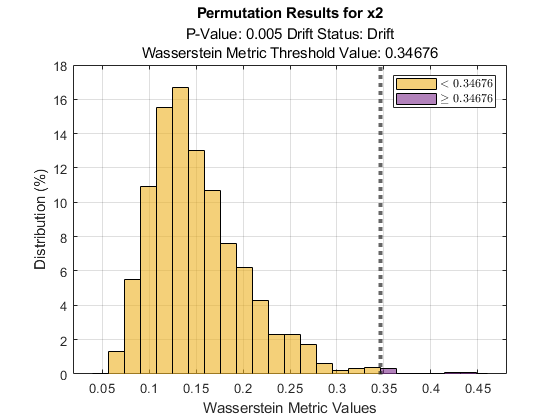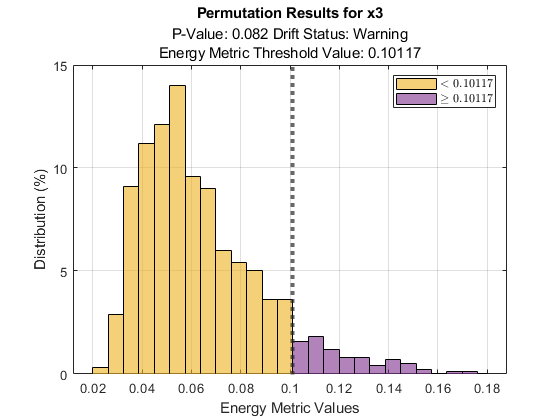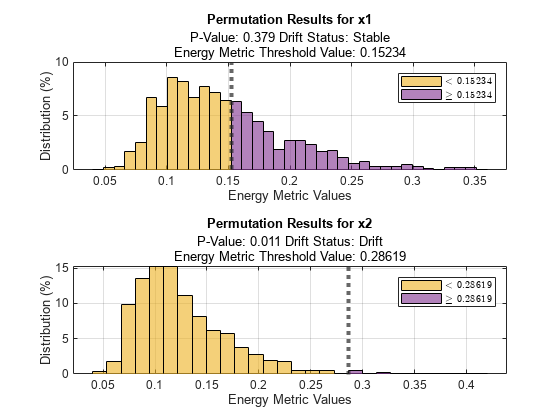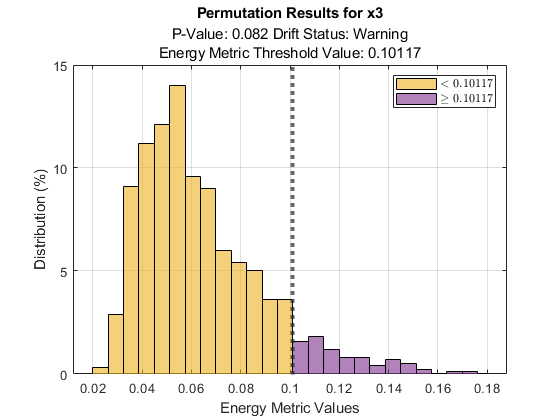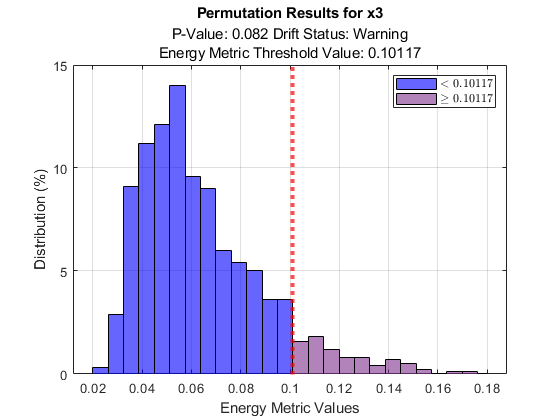plotPermutationResults
Plot histogram of permutation results for a variable specified for data drift detection
Since R2022a
Syntax
Description
plotPermutationResults( plots
the histogram of metric values computed by the DDiagnostics)driftdetect function
during permutation testing for the variable with the lowest
p-value.
If you set the value of EstimatePValues to
false in the call to detectdrift, then
plotPermutationResults does not generate a plot and, instead,
returns a warning.
plotPermutationResults(
plots the histogram for the variable specified by DDiagnostics,Variable=variable)variable.
H = plotPermutationResults(___)Histogram objects
H for the metric values computed during permutation testing. Use
H to inspect and modify the properties of the histogram. For more
information, see Histogram Properties.
[
additionally returns a H,CL] = plotPermutationResults(___)ConstantLine object CL for
the metric threshold value. Use CL to inspect and modify the
properties of the line. For more information, see ConstantLine Properties.
Examples
Input Arguments
Output Arguments
Version History
Introduced in R2022a
See Also
detectdrift | DriftDiagnostics | plotDriftStatus | plotEmpiricalCDF | plotHistogram | ecdf | summary | histcounts
